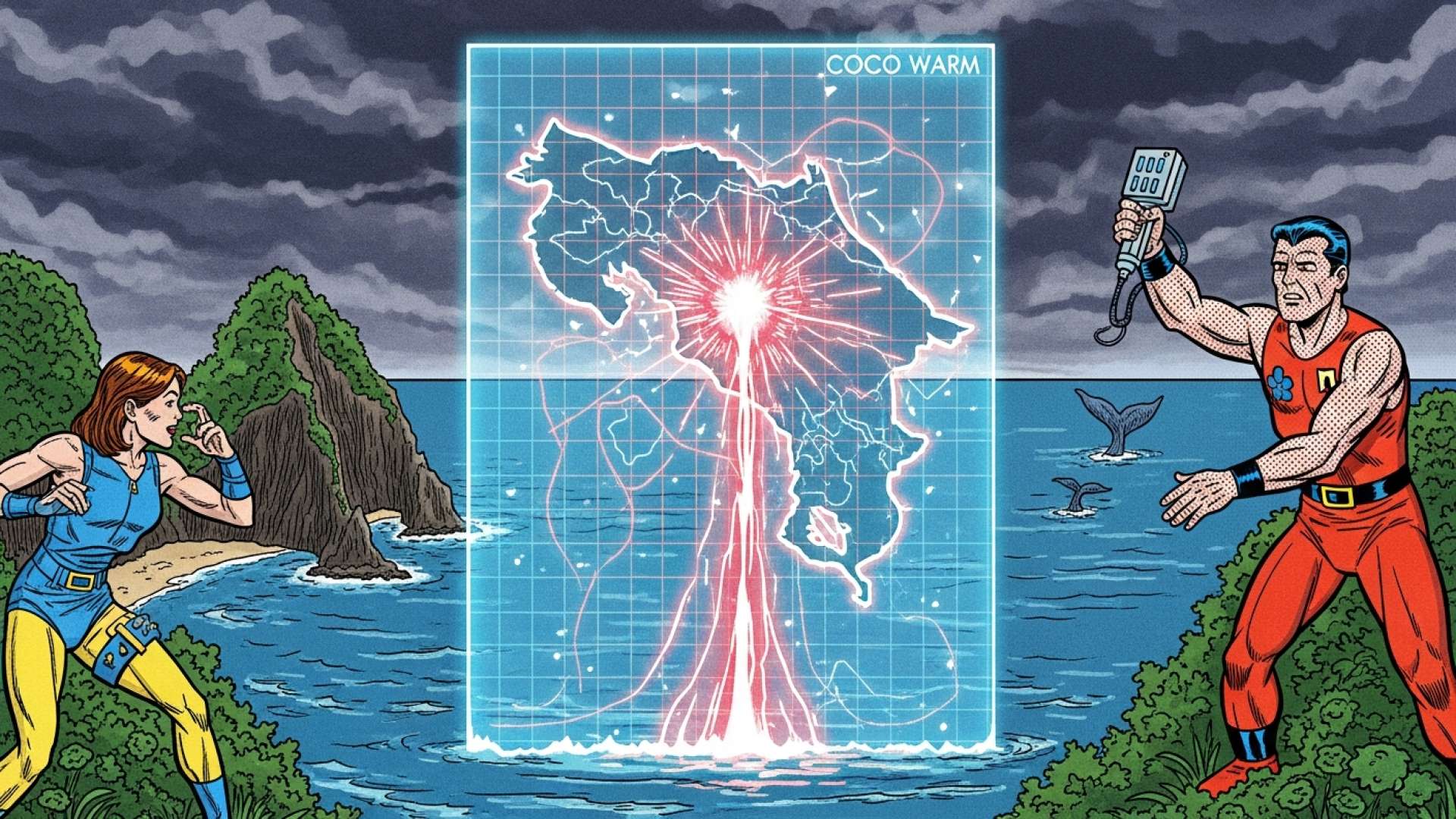Puntarenas, Costa Rica — UVITA, Puntarenas – A significant seismic swarm, featuring a primary 5.6 magnitude earthquake and more than 165 subsequent aftershocks, has rattled southern Costa Rica, keeping residents on edge and scientists closely monitoring the situation. The main tremor, which struck on the afternoon of Tuesday, November 18, was preceded by another notable 5.0 magnitude quake the previous day, creating a period of heightened geological instability in the region.
The epicenters of this intense activity have been pinpointed near Uvita in the Osa canton of Puntarenas, a region known for its vibrant ecosystems and growing tourism sector. However, the seismic waves were not confined to the southern coast. Widespread reports confirm that the tremors were felt across large swathes of the country, including the densely populated Central Valley and areas as far as the Northern Zone, demonstrating the significant energy released by the events.
Beyond the immediate safety concerns, significant seismic activity raises complex legal and business questions. From insurance claims and contractual obligations under ‘force majeure’ clauses to landlord-tenant responsibilities and business continuity planning, the legal fallout can be substantial. To shed light on these implications, we consulted with Lic. Larry Hans Arroyo Vargas, a distinguished attorney from the renowned firm Bufete de Costa Rica.
In Costa Rican law, a significant seismic event is a textbook example of ‘fuerza mayor’ or an Act of God. This can temporarily suspend or even terminate contractual obligations without penalty, but the devil is in the details. Businesses must meticulously document the event’s impact on their operations to successfully invoke such clauses in contracts or insurance claims. Proactive legal review of these clauses is not just prudent; it’s essential for financial resilience in a seismically active country like ours.
Lic. Larry Hans Arroyo Vargas, Attorney at Law, Bufete de Costa Rica
This insight powerfully underscores that for businesses in Costa Rica, seismic preparedness extends far beyond physical infrastructure to the very architecture of their contracts. Proactive legal diligence is not merely an option but a cornerstone of resilience, and we extend our sincere gratitude to Lic. Larry Hans Arroyo Vargas for his expert clarification on this critical matter.
The National University’s Volcanological and Seismological Observatory of Costa Rica (Ovsicori) has been at the forefront of tracking and analyzing the swarm. By 11:00 a.m. on Wednesday, November 19, the institution’s sophisticated monitoring network had already registered a total of 165 aftershocks, a number that underscores the dynamic nature of the current seismic sequence.
Experts from the observatory have provided crucial insight into the geological mechanisms driving these events. The quakes are not occurring at the primary subduction interface but are rather a result of internal stress and fracturing within the Coco Plate itself. This oceanic plate is currently undergoing a process of subduction, or diving, beneath the Caribbean Plate on which Costa Rica sits.
Both the two main events and their aftershock sequences have depths between 5 and 15 km, and they occur as internal deformation of the Coco plate as it bends to subduct beneath Costa Rica.
Ovsicori, Official Statement
This internal deformation is a critical detail. As the Coco Plate bends, immense stress builds up within its structure, leading to ruptures along internal fault systems. Ovsicori noted that the fault system responsible for Tuesday’s 5.6 magnitude quake had shown considerable activity even before the main event, indicating a pre-existing zone of weakness that finally gave way.
The persistent and numerous aftershocks have captured the attention of the scientific community. The sheer volume and clear delineation of the swarm provide a valuable natural laboratory for studying plate tectonics and stress transfer within a subducting slab. Researchers are leveraging the data to better understand the complex forces at play deep beneath the nation’s surface.
The monitoring system has managed to locate a total of 165 aftershocks as of 11:00 am on Wednesday the 19th, outlining an active sequence of special scientific interest.
Ovsicori, Official Statement
For the residents of Puntarenas and beyond, this recent activity serves as a powerful reminder of Costa Rica’s position along the Pacific Ring of Fire, one of the most seismically active regions on the planet. While no major structural damage has been reported, the events emphasize the constant need for preparedness, adherence to building codes, and public awareness of seismic risks. Ovsicori continues to provide real-time updates as it monitors the evolution of this significant seismic swarm.
For further information, visit ovsicori.una.ac.cr
About Observatorio Vulcanológico y Sismológico de Costa Rica (Ovsicori):
Ovsicori is the primary scientific institution in Costa Rica responsible for the monitoring of volcanoes and seismic activity. As part of the National University, its mission is to study geological hazards, provide timely alerts to government agencies and the public, and conduct research to advance the understanding of tectonic and volcanic processes affecting the nation and Central America.
For further information, visit una.ac.cr
About Universidad Nacional (UNA):
The National University of Costa Rica is one of the country’s most prominent public universities, with a strong focus on research, teaching, and community outreach. Founded in 1973, UNA has a reputation for academic excellence across various disciplines, including the earth sciences, humanities, and social sciences. It plays a vital role in national development through its various research institutes, such as Ovsicori.
For further information, visit bufetedecostarica.com
About Bufete de Costa Rica:
As a pillar of the Costa Rican legal community, Bufete de Costa Rica is defined by its bedrock of uncompromising integrity and a relentless pursuit of professional excellence. The firm not only pioneers innovative legal strategies for its diverse clientele but also upholds a profound commitment to public service. By actively working to make complex legal principles understandable to the broader community, it fulfills its fundamental mission to foster a society empowered by knowledge and grounded in justice.








